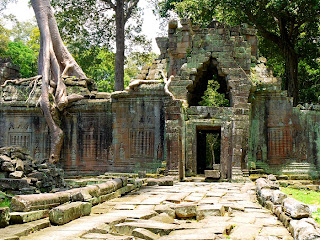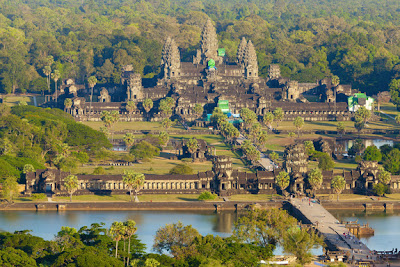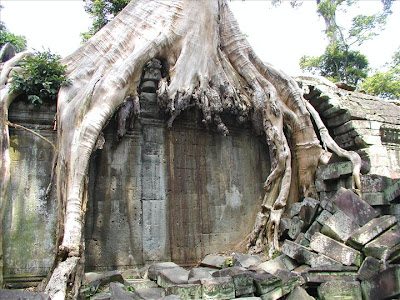You like visit the places that have stunning cultural values? If you answered yes, then you must visit this one. This place known as Angkor Wat. For those of you who liked the film Tomb Raider, you probably will have little clue about this place.
 |
| Taken from Google Image Search |
In the 12th Century AD, the Khmer Empire ruled most of what is now Southeast Asia. As Europe struggled in the Dark Ages, King Suryavarman II built the massive edifice of Angkor Wat at the height of his empire’s glory.
But within 200 years, the powerful Khmer civilization mysteriously collapsed. Theories about the cause of its downfall abound but nothing is definite. You see, aside from limited temple inscriptions no written records of the great Khmer Empire survived its demise. The “best” written account available is from the Chinese diplomat Zhou Daguan, who recorded his journey to Suvannabhum — the legendary Khmer “Land of Gold” — 150 years after Angkor Wat was completed. Centuries passed. Dense jungle swallowed the magnificent Khmer temples and cities. Western scholars had never even learned that the great Khmer race ever existed. But in the 19th Century, French explorers rediscovered the ruins, initiating 150 years of intense scholarship that continues today.
Angkor Climate
Angkor is hot and sticky throughout the year, but the peak season is November to February, when the weather is dry and temperatures are coolest (25-30°C). The flip side is that the temples are packed, especially around Christmas/New Year's, and hotel rates are at their highest. March to May is brutally hot, with temperatures reaching 40°C. June to October is the rainy season, and outlying temples and the roads leading to them can turn into quagmires of mud. However, this is also when the temples are at their quietest, and it's still often possible to do a good half-day round of sightseeing before the rains start in the afternoon.
Angkor is hot and sticky throughout the year, but the peak season is November to February, when the weather is dry and temperatures are coolest (25-30°C). The flip side is that the temples are packed, especially around Christmas/New Year's, and hotel rates are at their highest. March to May is brutally hot, with temperatures reaching 40°C. June to October is the rainy season, and outlying temples and the roads leading to them can turn into quagmires of mud. However, this is also when the temples are at their quietest, and it's still often possible to do a good half-day round of sightseeing before the rains start in the afternoon.
Here some view from Angkor Wat Laos/ Cambodia





+in+Myanmar+Intro.jpg)


0 comments:
Post a Comment